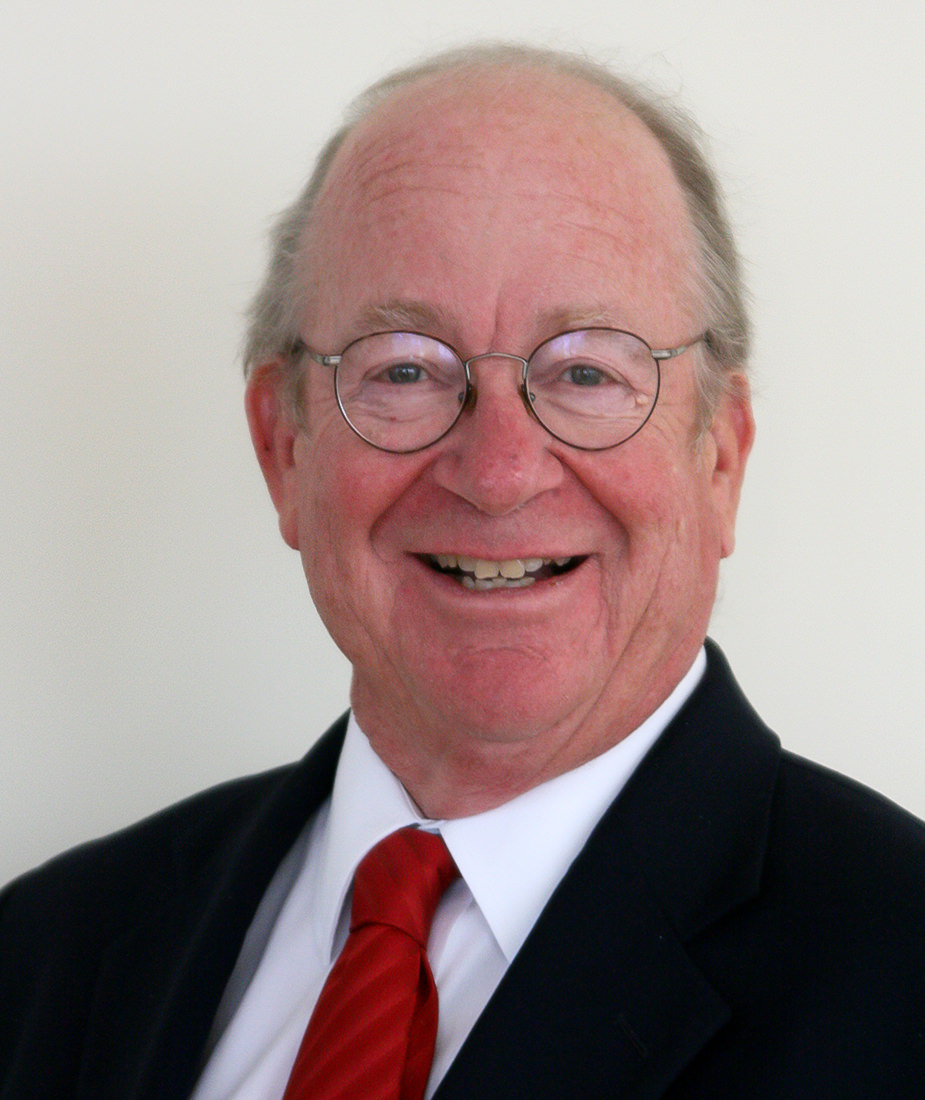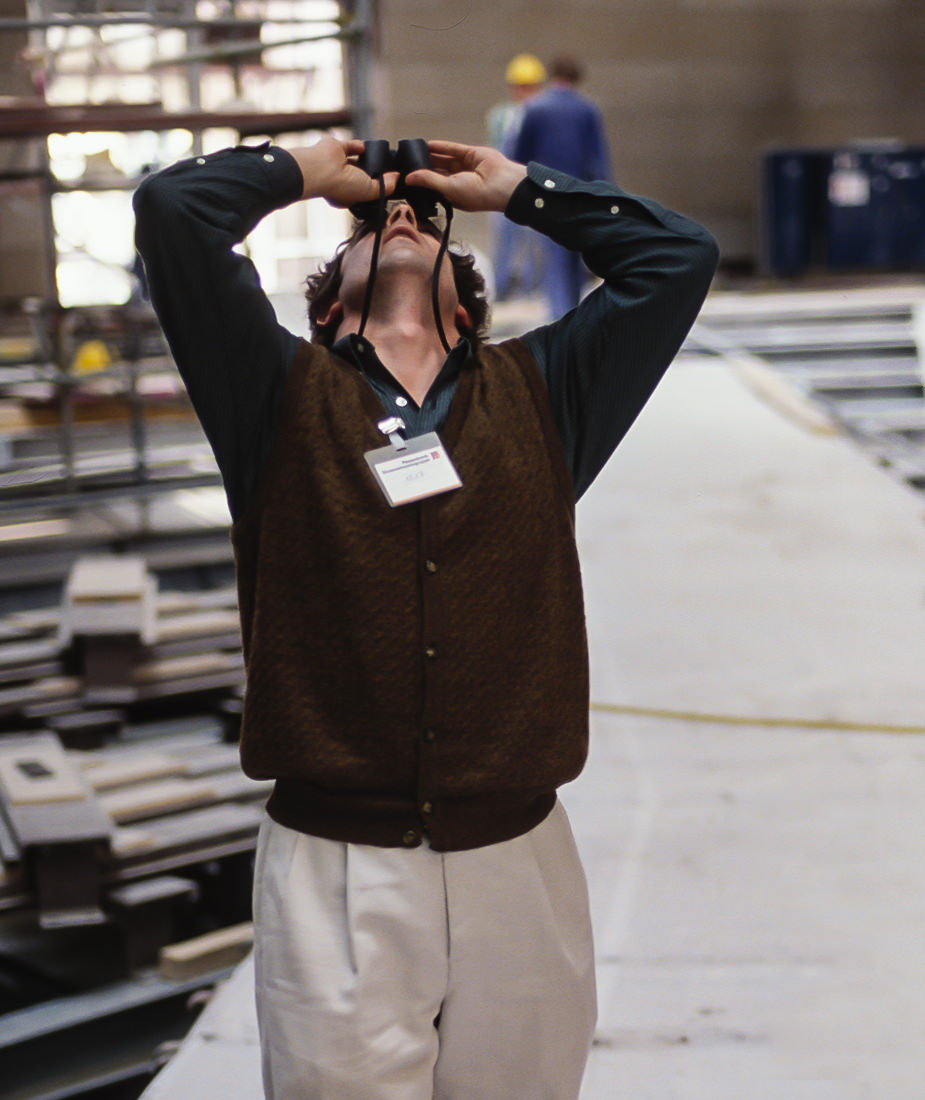Firm History
After the army in 1963, he joined his father's Washington, D.C.-based electrical and mechanical engineering practice and married Margaret Graham, the sister of Bruce Graham a partner at SOM. When SOM received the commission to design the new World Bank headquarters, Graham asked him to design the lighting for it. About this time, Engle, and a small group of lighting designers founded the International Association of Lighting Designers, into which he was inducted as a Fellow in 2014.
Graham introduced Engle to inventor/manufacturer, Edison Price, which developed into a long, mutually beneficial collaboration. “Learning from Edison how to design lighting fixtures taught me that it was possible to begin with what lighting the architectural design called for, and then develop fixtures that achieved those goals.”
The firm of Claude R. Engle, Lighting Consultant was established in 1968. That same year Minoru Yamasaki asked Engle to take over the design of the Twin Towers at the World Trade Center, which began a lifelong collaboration between the two. In 1970 John Wood joined the firm. For the next 40 years he would be the lead designer on most of the domestic projects. Other collaborations began about this time, first with Philip Johnson's Pennzoil Place project in Houston, and then with I.M. Pei for the National Gallery East Wing in Washington, D.C., Arthur Erickson and Harry Seidler. Subsequently, Norman Foster commissioned Engle to work with him to get the maximum impact of natural light for the Sainsbury Centre in Norwich, England and which inaugurated another long-standing collaboration which endures to this day.
In 1978 Danielle David joined the firm to work on the Regent of Hong Kong, Hong Kong Shanghai Bank, the Louvre and Century Tower among many other iconic projects. In 1994 Engle's son, Claude Jr., began working for the firm and in 1997 began collaborating full-time as a senior designer.
Design Philosophy
We believe that light is one of the most important materials in the architectural palette. We do our best to treat each project as a tabla rasa with no preconceptions. We do not think of answers before we hear or understand the questions. To find out what those questions are we listen intently to the Client and the Architect to understand the Client’s needs and the Architect’s design assumptions and goals. The weight of a stroke in an architect’s sketch can often tell us more than pages of text. If one studies long enough a building’s configuration, its purpose, its surroundings and its user, the building will often tell you how it wants to be lighted. Our lighting systems are designed to reveal the architecture as it is intended to be perceived. We want you to see the architecture, not the lights. We work fastidiously to integrate the lighting systems into the architecture and the project’s diction. Only if it is part of the discovered vocabulary of a project do we design lighting systems intended to be seen, as in the case of the Winspear Chandelier.
It is crucial to develop the ability to look around a corner in the plans, to think in a succession of spaces. Lighting design is a discipline based on what we see.
The lighting system itself should be invisible. Fixtures must be placed graphically in the correct places, have the right size and proportion, and have as little brightness as possible. Throughout our work we use "darklite" fixtures from a palette with a wide range of functions while looking virtually identical and using aperture sizes in proportion to the space. We strive to achieve an understated sophistication in our designs.
Our Process
This team is committed to design elegance and allowing the project’s design to drive the technology that is needed and not the other way around. This is how innovation is possible: identifying the need of the project and then looking for the technical solution. In this way Claude R Engle, Lighting Consultant has worked to develop some of the most sophisticated lighting systems in the world like the One World Trade Center Beacon and sophisticated natural lighting systems like the Parabola of mirrors for the Reichstag Dome and the Sun Scoop for the Hong Kong Shanghai Bank.
From comprehensive analysis of the project we begin to construct the concept for the lighting. Each concept involves a unique lighting story written in its own way. This story and its vocabulary determine the methodology for its development. As a result, our design reports are unique for each project.
To illustrate these concepts or stories we use diagrams, sketches and both 2-D and 3-D drafting to analyze questions and construct the foundations for answers. We also use rendering. Like many artists, we work in black and white which keeps the emphasis on the value of elements rather than the chroma of those elements.
Once the lighting design concepts and schematic designs of lighting systems have been accepted, we shift focus to the development of the lighting systems. We prefer to create performance specifications composed of our fixture drawings that are tailored to the project so that the manufacturers can understand the particular needs of the project. The performance specification process also offers the design team options from all over the world for solving their lighting needs without being beholden to a single manufacturer, and the team can choose the best fabricator for the right job.
Our performance specifications detail precisely how the lighting system is integrated into the architecture, what it is supposed to do and how the system can be installed most efficiently and economically. The performance specification also identifies through the solutions we suggest what the problems we are trying to overcome. Good manufacturers understand this and are encouraged to propose alternatives, which we welcome in order to develop the best solution. In this way, we are able to tap manufacturers' extensive experience to find the most efficient and innovative ways to solve lighting problems and potentially develop new fixture designs. We are experienced at working with manufacturers all over the world to help them develop what is needed.
To be successful, the lighting design must have a strong concept, thoroughly detailed design and a good execution with all of the participants working closely as a team. Claude R. Engle, Lighting Consultant is committed to design excellence in terms of finding elegant, efficient solutions for the lighting demands of the project’s design. This approach often results in a saving in both time and money. We find that when one designs in this way, well-conceived and well-executed design is going to naturally exceed any environmental requirements.


